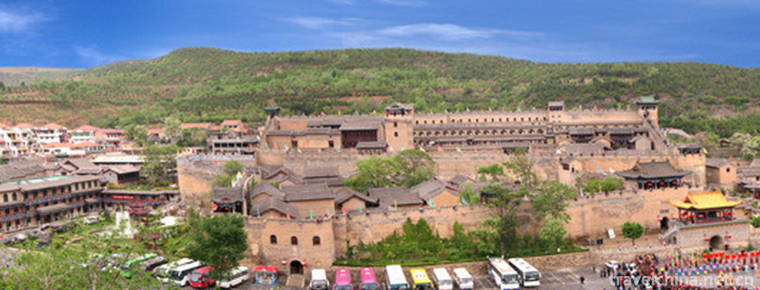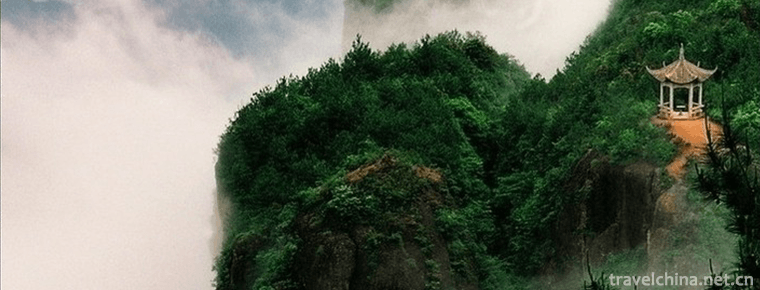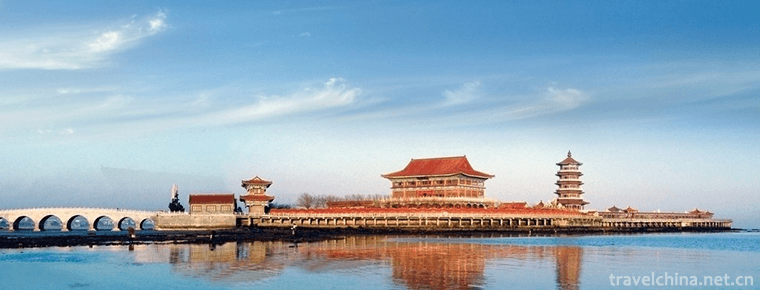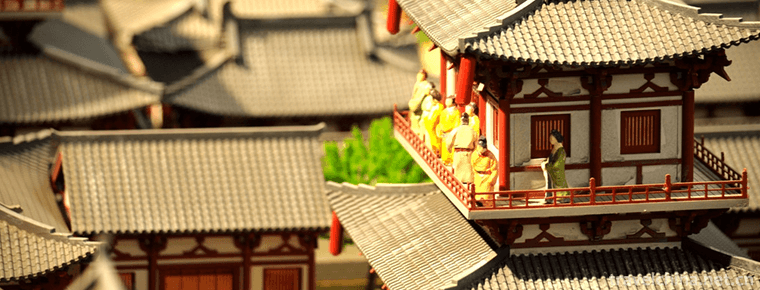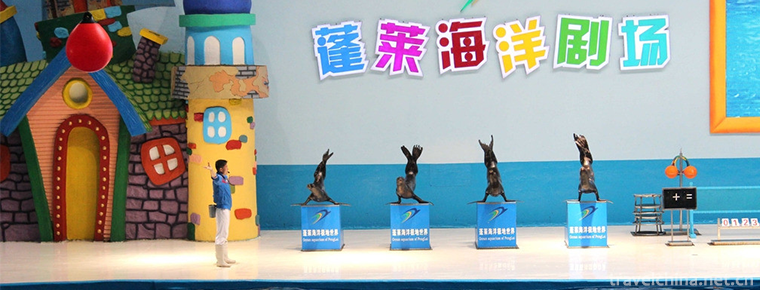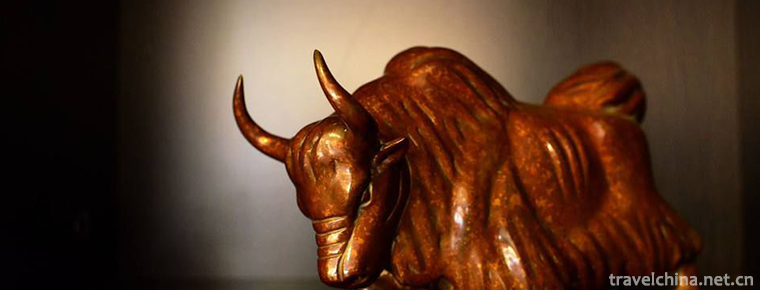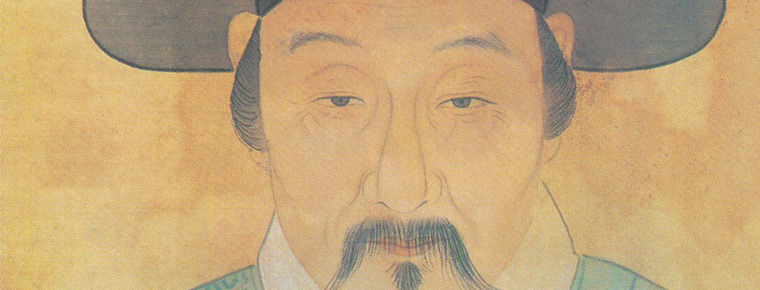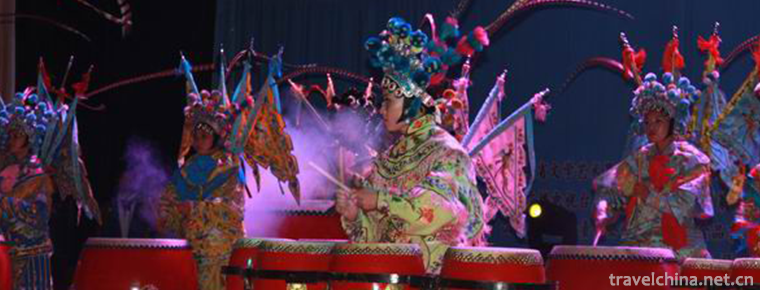Shaohuashan National Forest Park
Shaohuashan National Forest Park
Shaohuashan National Forest Park is located at the north foot of Qinling Mountains, 5 kilometers southeast of Huaxian City, Shaohuafeng in the west, Lilongshan in the east, Qinling main ridge in the south, 310 National Highway in the north, Lianhuo Expressway (Xi'an-Tongguan Section) and Longhai Railway, covering an area of 63 square kilometers.
Shaohua Mountain National Forest Park is composed of five scenic spots: Hongya Lake, Shimen Gorge, Dense Forest Valley, Qianlong Temple and Shaohuafeng, with up to 150 natural and human landscapes. The climate type is warm temperate semi-humid climate. The forest coverage is over 90%, the ecological environment is almost primitive and the climate is pleasant.
Development history
Shaohuashan National Forest Park was built in 2005, with a total investment of 180 million yuan. After five years of construction, it now has the conditions to open the park.
On September 17, 2010, Shaohuashan National Forest Park opened grandly.
geographical environment
Location context
Shaohua Mountain National Forest Park is located at the north foot of Qinling Mountains, 5 kilometers southeast of Huaxian County, Shaanxi Province. It starts from Shaohua Peak in the west, reaches Panlong Mountain in the east, and links the main ridge of Qinling Mountains in the South and Guanzhong Plain in the north. It is about 10 kilometers wide in the East and about 35 kilometers deep in the South and north, with a total area of 63 square kilometers.
topographic features
The main peak of Shaohua Mountain is 1664.4 meters above sea level. Because it is connected with Taihua Mountain in Xiyue, the two mountains have the same roots and veins, and are far away from each other. They are also called "Erhua", but lower than Huashan. They are also called Xiaohua Mountain because they are named "Shaohua Mountain" or "Xiaohua Mountain".
climate
Shaohuashan National Forest Park is a semi-humid climate in warm temperate zone, with an average annual temperature of 9.1-10.9 degrees Celsius, an average temperature of - 5.3 degrees Celsius in the coldest month of January and an average temperature of 22.5 degrees Celsius in the hottest month of July. The annual average frost-free period is 207 days. The annual sunshine hours are 2000 hours. The average annual relative humidity is 71%.
Main attractions
Ningshan Temple
Located in Lianhuasi Town, Huaxian County, Shaanxi Province. Ningshan Temple is the earliest Buddhist temple in the eastern part of Shandong Province in the final south of Shaanxi Province. It is located at the foot of the hill on the eastern side of the cypress slope of Xiaofuyukou, surrounded by dense bamboo forests and long streams. Legend has it that the construction of Ningshan Temple and Hanwu
Emperor Liu Xiu is concerned. Liu Xiu was once imprisoned by Wang Mang in Qinglong Ridge of Wangqu in the south of Xi'an City. He was rescued from danger. Xiaofuyu was his place of rest and hiding. Liu Zhuang, the son of Liu Xiu, the emperor of Han Ming, respected Buddhism in order to commemorate his great achievements and repay the surviving grace of his real father. Ningshan Temple was his lower courtyard when he sent the prime minister to build Qianlong Temple in Panlong Mountain. After the completion of Ningshan Temple, Prime Minister Wang and his disillusionment with the skill of shaving monks, so Ningshan Temple is also known as "Wang Xiangfu". In the east of Changshoupo village near the temple, there was a tomb and stone pagoda of Prime Minister Wang, which were preserved until 1949.
Valley lake
Located at Xiaofuyukou, the original Xiaofuyu Reservoir was rebuilt. The lake dam is 30 meters high and 116 meters long. It connects East and west to the confronting cliffs. On the top of the dam, there are Gallery bridges with distinctive styles, white columns and blue beams, flat roofs, clear and elegant, each with a pavilion at the East and West bridges. Above the corridor bridge, there are three red lacquer characters "Fu Gu Hu", which are inscribed by Wu San Da, a famous contemporary calligrapher in Shaanxi Province. Under the bridge is a 33-metre-wide, 30-metre-high silver curtain formed by the overflow of the lake. Under the sunshine, the water curtain shines brightly, and rainbows often appear. The lake is open and sparkling, with an area of about 50,000 square meters and a water depth of more than 30 meters.
The stone archway
Located on the tourist highway in front of Shaohua Mountain, with a height of 14.6 meters, a width of 26 meters and a five-hole structure, it is the largest stone archway in Northwest China nowadays. It is made of white stone from Han Dynasty. The inscription of "Shaohua Mountain" in the middle of the archway door is written by Mr. Shen Peng, a great Chinese calligrapher. In front of the archway, there are red grass and green flowers, cedars whirling, and behind the archway, there is a 20-meter wide tourist road leading directly to the scenic spot. The archway is one of the landmark buildings of Shaohua Mountain, which was completed in May 2007.
Shaohuafeng Scenic Area
Located in the western part of the park, it is formed by compression, folding and fracture of metamorphic rocks and granites, so the mountains are magnificent, the rocks are bare, the peaks are undulating, and the valleys are deep. The hill is like a dustpan, the mouth of the dustpan is northward, the beams on both sides of the East and West are winding upward, like two dragons meeting at the top of the main peak. The inside of the ditch is the left ditch. The trees in the ditch are lush, the grass is green, and there are paths circling upward, leading directly to the top of the mountain, and the exterior wall is thousands of miles away, and the bottom is not visible. "Religion thrives because of famous mountains, and famous mountains are thick because of religion." Shaohua Mountain is a famous Taoist mountain.
Qianlong Temple Scenic Area
Located in Mufuyu, adjacent to Baiyayu in the east, Xiaofuyu in the West and Panlongling in the south, the scenic spot covers 360 hectares and is 600-1300 meters above sea level. It is named Qianlong Temple. Qianlong Temple scenic spot belongs to the low mountain landform of Qinling Mountains. Its front hill slope is gentle, the back hill is steep, and a stream beside the road is clear water. It moistens all kinds of plants in the mountain all the year round. In the middle, there are cloves, carnation, lilies, wild chrysanthemums, and in the upper part, there are cypress, Oriental Arborvitae and Pinus bungeana, which make the four seasons continuous and eight sections evergreen.
Dense Forest Valley Scenic Area
Located at the southernmost tip of Xiaofuyu, with an area of 1220 hectares and a forest coverage rate of 90%, there are more than 300 species of trees. The rare and endangered plants are Eucommia ulmoides, Acer mongolica, Fraxinus mandshurica and Lingchun wood. There are more than 200 kinds of wildlife, which belong to the first level of national protection, including musk deer, leopard and white shoulder sculpture. The second level of wildlife protection includes black bear, red-bellied pheasant, bird eagle, Chinese mountain tiger and Phoenix butterfly, etc.
Tourism information
traffic
Self-driving vehicles from the direction of Xi'an, through Lianhuo Expressway to Huazhou. Under the exit of Shaohua Mountain, it can be reached 5 kilometers east of 310 National Highway.
Self-driving vehicles from Shanxi can be reached 11 kilometers west of 310 National Highway through Lianhuo Expressway to Luofu Exit.
Xi'an Textile City Bus Station has a train leaving at 8 a.m. to Shaohua Mountain and returning to Xi'an at 5 p.m.
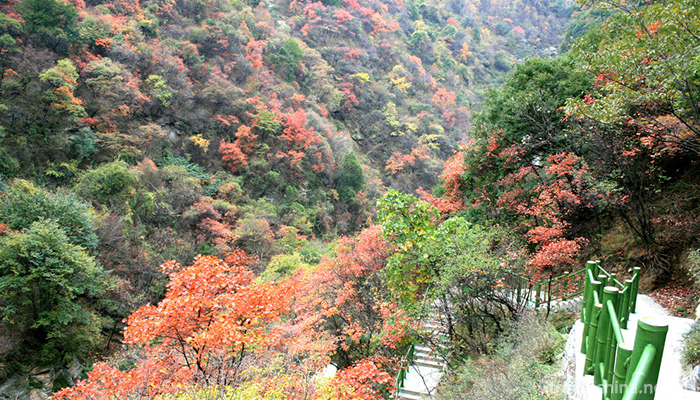
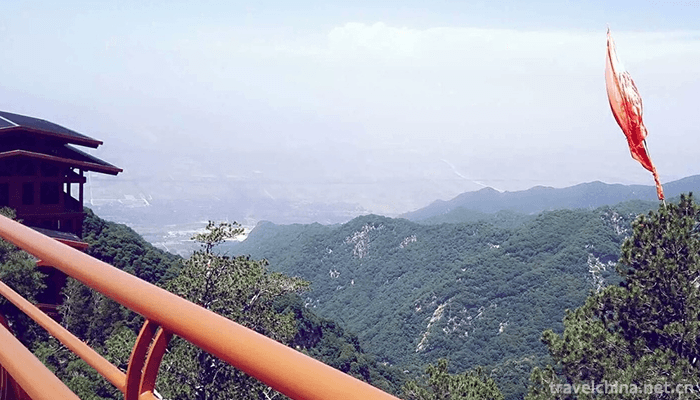
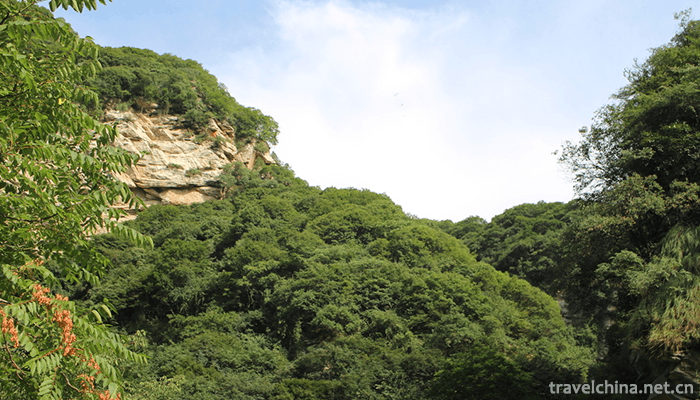

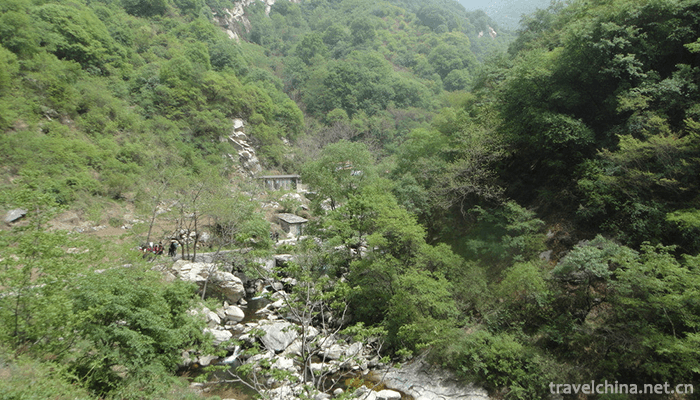
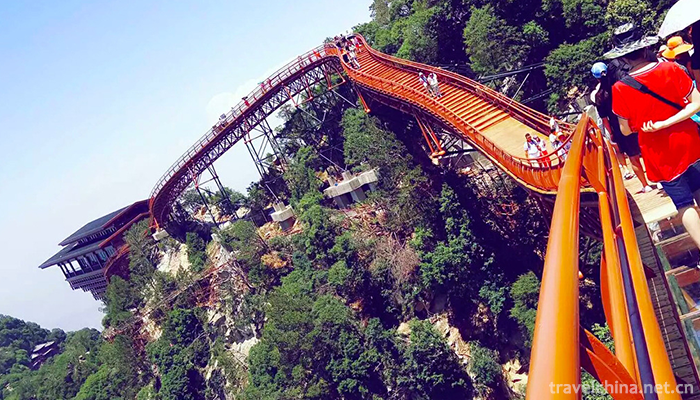
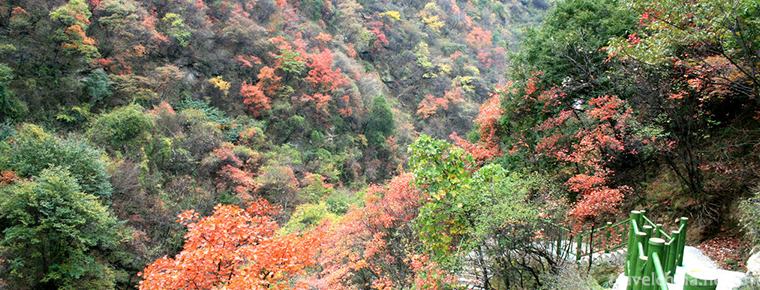
Shaohuashan National Forest Park
-
Royal Prime Ministers Palace
Huangcheng Xiangfu (National AAAAA Scenic Area) is located in Beiliu Town, Yangcheng County, Jincheng City, Shanxi Province.
Views: 157 Time 2018-11-24 -
ShenxianjuImmortal residence
Shenxianju, a famous ancient mountain, is also known as Weiqiang Mountain. Now it is a national 5A scenic spot. There is the title of He Shu's calyx in Qianlong period of Qing Dynasty
Views: 243 Time 2018-12-07 -
Eight Immortals Crossing the Sea Scenic Area
Eight Immortals Crossing the Sea Scenic Area, also known as Eight Immortals Crossing the Sea and Eight Immortals Crossing the Haikou, is situated on the shore of the North Yellow Sea in Penglai City
Views: 237 Time 2018-12-23 -
Guyuan Northern Dynasty Sui and Tang Dynasties Cemetery
The tombs of the Northern Dynasty and Sui and Tang Dynasties in Guyuan are located in Xiaomazhuang, Yangfang, Shengou, Dabao, Wanglioba, five natural villages in the West and south suburbs of Yuanzhou
Views: 128 Time 2019-01-12 -
Penglai Ocean Polar World
Penglai Ocean Polar World is located at the foot of Penglai Danya Mountain. It is adjacent to the famous Penglai Pavilion. It is invested by Penglai Haifeng Industrial Co., Ltd. for 460 million yuan
Views: 244 Time 2019-02-07 -
Manufacturing Techniques of Spotted Copper
The bronze production technology, the traditional handicraft of Qujing City, Yunnan Province, is one of the national intangible cultural heritage.
Views: 170 Time 2019-04-03 -
The story of Xie Jin
Xie Jin (Dec. 6, 1369 - Feb. 22, 1415), a literary Minister of Ming Dynasty, was born in Jishui, Ji'an Prefecture, Jiangxi Province.
Views: 123 Time 2019-05-06 -
Liaoning wind and percussion ensemble
Liaoning drum music, commonly known as drum music. It is one of the traditional folk instrumental music in China. Liaoning drum music is divided into Suona music and Sheng wind music, and according to
Views: 307 Time 2019-05-13 -
Mounting and repairing techniques
The mounting and repairing technique of ancient Chinese characters and paintings is a kind of traditional Chinese handicraft. It is used for restoration and restoration of ancient calligraphy and pain
Views: 374 Time 2019-08-10 -
Yuchan mountain
Yuchan mountain is located next to Luxian County, Luzhou City, Sichuan Province. It is named for its mountain shape and stone like shape. Yuchan mountain has always been famous in South Sichuan for its secluded mountains, strange stones, beautiful waters and many cultural relics.
Views: 353 Time 2020-10-15 -
Zhenwu mountain ancient Temple Group
Zhenwu mountain ancient Temple group is located in the urban area of Yibin City, adjacent to Cuiping mountain, with an altitude of 396 meters. It is named for Zhenwu temple on the mountain, covering an area of more than 50 mu.
Views: 236 Time 2020-10-16 -
Cuiyun corridor
Cuiyun corridor is a section of the ancient Shu Road, and also a section of Jianmen Shu Road, which is famous for its danger. Cuiyunlang, also known as "Huangbai" and "zhangfeibai" in ancient times, is located in Jiange County, Guangyuan City, Sichuan Province, and Zitong County, Mianyang City. Cuiyunlang in Jiange county has been built into a national AAAA scenic spot.
Views: 129 Time 2020-11-08
